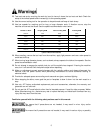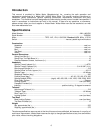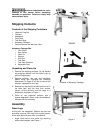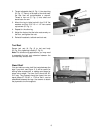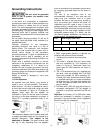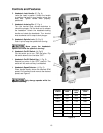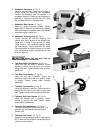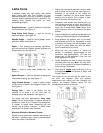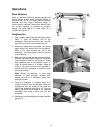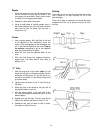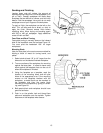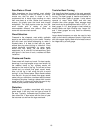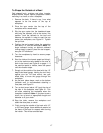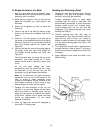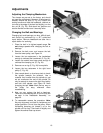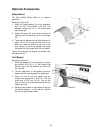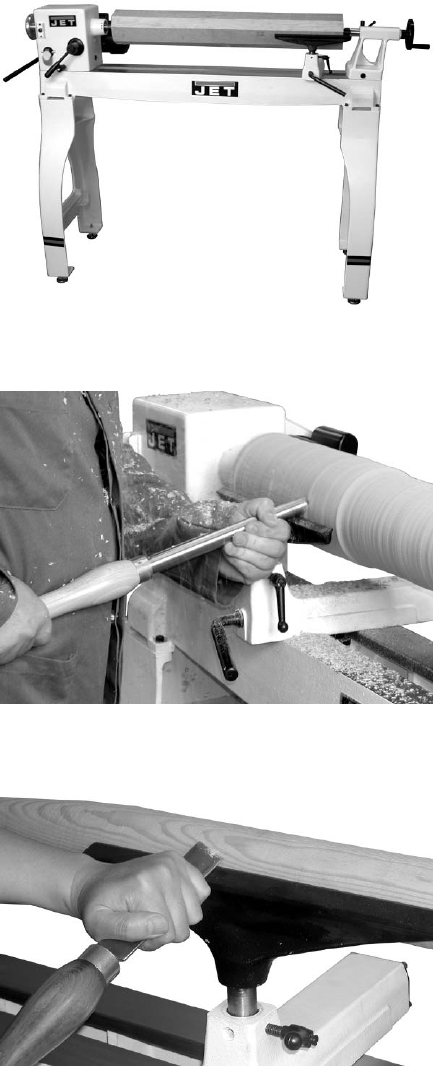
13
Operations
Stock Selection
Stock for spindles should be straight grained and
free of checks, cracks, knots and other defects. It
should be cut 1/8" to 1/4" larger than the finished
diameter and may require additional length to
remove ends if required. Larger stock should have
the corners removed to produce an octagon
making the piece easier to rough down to a
cylinder, see Figure 13.
Roughing Out
1. Use a large roughing gouge and begin cutting
about 2” from the tailstock end of the
workpiece. Place the tool on the tool rest with
the heel of the tool on the surface to be cut.
2. Slowly and gently raise tool handle until cutting
edge comes into contact with the workpiece.
Work to the right towards the end of the
workpiece. You never want to start at the end
of a workpiece.
3. Now continue to work the rest of the workpiece.
Roll the flute (hollowed-out portion) of the tool
in the direction of the cut, see Figure 14. Make
long sweeping cuts in a continuous motion to
rough the piece down to a cylinder. Keep as
much of the bevel of the tool as possible in
contact with the workpiece to ensure control
and avoid catches.
Note: Always cut downhill, or from large
diameter to small diameter. Always work
toward the end of a workpiece, never start
cutting at the end.
4. Once the workpiece is roughed down to a
cylinder, smooth it with a large skew. Place the
cutting point near the center of the chisel and
high on the workpiece, see Figure 15. Touching
one of the points of the skew to the spinning
workpiece may cause a catch and ruin the
workpiece.
5. Add details to the workpiece with skew, spindle
gouge, etc.
Figure 13
Figure 14
Figure 15



